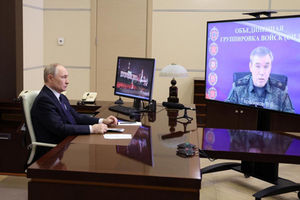Where does great customer care come from

I’m writing this sitting in an organisation where I’ve had a surprisingly good customer experience. That is rare enough to make me pause and reflect. Why is it that some can pull this off, but most fail very miserably?
First, here’s what was good. It started from the front entrance, when the security guard jumped up from her seat as I approached and opened the door with a big smile.
The receptionists were warm and helpful, even though they were dealing with many people. There was technology at play; everything was entered into the computer, which then tracked the process thereafter.
I needed to move from room to room, but never was I just told where to go — someone came to get me and guide me. This interplay of human and machine made the whole thing work. A complicated people movement process was done with minimal friction.
Was it perfect? Not at all. There were some glitches and delays; some people did not quite do what they were supposed to. The point is, by and large I was impressed and satisfied. Human errors occurred, as they always do, but there was rapid recovery and remediation. That’s as good as it gets.
My question again: why does this organisation — and perhaps a handful of others—manage to pull this off, while most just can’t do it?
My first answer to that question is something readers of this column will be familiar with: it starts at the top. If you see outstanding customer experience, peer behind the curtain and you will also see outstanding leadership at work.
For happy customers to be the norm and not the exception, both the people who head service delivery and those who head the entire organisation have to care a great deal.
In other words, customer excellence has to be a cause and a passion for the folks at the top, not just a job. It has to be felt, not just designed and delivered. For those people, customers’ smiles and appreciations create a warm glow; complaints are registered as stinging rebukes.
If the bosses don’t care enough, no one will. If the bosses lead the cheers and set the example, there’s a chance others will follow.
The next practice driving customer excellence? Building employee happiness. Customers can only be made happy by happy people. If employees are underpaid, badly managed, resentful, and looking to jump ship at the first opportunity, good luck with your customer care — you’ll need it by the truckload. Good jobs and engaged employees drive great customer outcomes — there is no other way. That requires staff members to be selected for temperament and attitude, and trained for job-specific skills. It also needs employees prepared to go the extra mile — willingly.
Those humans need to be combined with intelligent technology. In today’s tap-tap-done world, great tech is what delivers high-speed, low-friction experiences. Humans can guide and smile and empathise, but machines enable speed and convenience. Your ability to combine the two smartly is what sets you apart.
Lastly, outstanding customer experience is not a formula that can be copied or a template that can be followed; it is best done with creativity and imagination. It’s a jazz ensemble, not a strictly defined symphony. You can copy it or benchmark it against others, but that’s not where excellence lies. It is far better to mix your assets in your own unique and memorable way.
Those four ingredients — leadership, humans, tech, and uniqueness — are what combine to produce an excellent repast for customers. It must be remembered: anyone can make customers happy on a given day, or even for a special week in the year. Month after month, and year after year — that’s where the real reward and real achievement sits.
Boss it, humanise it, digitise it, jazz it — that’s the way I describe the four practices in my own customer experience seminars. I can see three of them visibly at play where I’m sitting and writing this. Without ever having met the leaders of the enterprise, I know the first, and most important of my four practices — boss it — is at work, for it is not possible to deliver the other three without good leadership in play.
None of that is easy, and that is why consistently excellent customer experience is rare. To pull it off is special. It can also unravel quickly if standards slip — it’s not forever. The dailyness of it requires grit and endurance, and constant alertness. So I’m not holding my breath as I go to my next destination.
What if I was coming to encounter your organisation as a customer or user? What do you think I might have written today? If that worries you, and you have a leadership role where you are, don’t point fingers. Walk to the mirror instead, and ask yourself if you are up for this most demanding of challenges.





